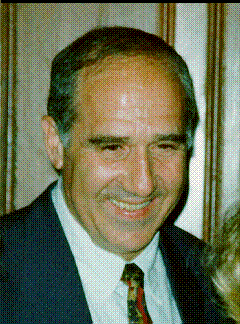Researchers from the Hebrew University and MX Biotech Jerusalem have developed a revolutionary theory according to which some of the building blocks of memory are the metals in our brains * The theory may have far-reaching effects on the world of medicine and computers

For many years scientists have been trying to crack the wonders of memory - that ability to store and preserve information provided through the various senses and use it in the short and long term. So far all the theories developed to explain how memory works have focused on the nerve cells which are the main component of the brain and the factor responsible for transferring and processing information. However, these theories did not explain how memory works at a molecular level, and therefore had difficulty presenting an in-depth understanding of its activity. Now researchers from the Hebrew University and the company MX Biotech Jerusalem managed to build for the first time an innovative model that explains how memory works at the molecular level. A published model, on which a patent has already been registered, may have far-reaching effects in a variety of fields such as medicine, brain research and computer science.
Prof. Haim Gilon from the Institute of Chemistry at the Hebrew University developed with Dr. Gerard Marks from the company MX Biotech Jerusalem a model which, contrary to previous theories, does not focus only on the nerve cells but on the space around them called the interneuronal medium, which constitutes a quarter of the brain tissue. The medium consists of proteins and polysaccharides in which various metals are embedded, and so far the prevailing explanation in the world of science has been that the main function of the neurotransmitter is the ongoing maintenance of the nerve cells. However, from an analysis of hundreds of studies that examined the effect of metals on a person's cognitive abilities, the researchers came to the surprising conclusion that these metals are also the building blocks of memory. Their article was recently published in the American journal ACS Chemical Neuroscience.
"The information that one of the roles of the metals in the brain is participation in the memory process has appeared throughout the scientific literature," says Prof. Gilon. "There are countless studies that have found that an excess of metals in the brain or a lack of them disrupts memory abilities. But so far no one has put all the information together into an orderly theory."
Based on these findings, Prof. Gilon and Dr. Marx developed a model that describes memory as an interaction between nerve cells, the interneuronal medium and the metallic elements in the interneuronal medium. "Each of the 15 metals found in the interneuronal medium is a building block for the process of processing information and using it for memory," explains Prof. Gilon. "Certain metals such as sodium or potassium create unstable structures with the interneuronal medium that are used for short-term memory that can be easily forgotten, while other metals such as zinc and copper create more stable structures that can be used for long-term memory."
The model created by the researchers makes it possible to graphically describe the various chemical processes in which the same metals are involved and thus to understand the memory processes in depth. The researchers even registered a patent through the commercialization arm of the Hebrew University - the company "Yishom" - for a device that will monitor the activity of metals in the brain in a non-intrusive way and can be used for medical and scientific diagnoses.
"The theory we developed obviously requires additional experimental proofs," notes Prof. Gilon. "But if the theory is indeed confirmed and accepted by the scientific community, then it will have far-reaching effects in many diverse fields. Since memory is the basis for understanding the functioning of the brain, knowing the molecular mechanism of memory will primarily contribute to a deeper understanding of various diseases related to memory, which will ultimately lead to the development of drugs for these diseases. In this context, the device we have patented will help in the detection and therapeutic monitoring of memory-related diseases. In the field of computers, the proposed model will encourage the development of powerful biological computers and lead to a new approach in connecting the brain to computers that may enable memory backup. In addition, the proposed model will allow in the future a molecular understanding of cognitive processes that will one day enable the development of new drugs for behavioral diseases."

5 תגובות
Professor Haim Gilon - Personality.
Danny I don't know if you are serious or not asking for further reference
Is there a patent on knowledge? Lucky that Einstein did not issue a patent on the theory of relativity.
What a piece he was my lecturer for organic chemistry.
One of the fiercest people.
Now you just have to decipher the rewrite, then collect the metals from ancient skeletons, and perform information recovery.